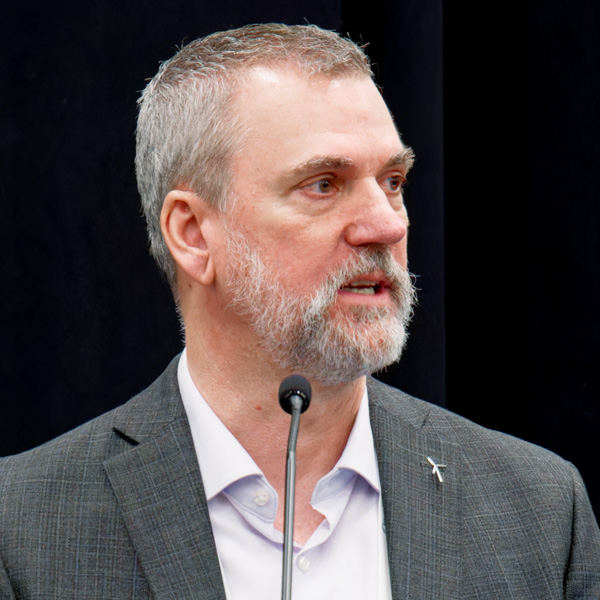RMR Contract for CPS Energy Unit Faces Increased Costs, Delays
ERCOT’s plans to continue running a 55-year-old San Antonio gas plant scheduled for retirement are being endangered by increased costs and timeline delays.
CEO Pablo Vegas told the Board of Directors during its April 8 meeting that “pretty significant findings” during CPS Energy’s inspection of its Braunig Unit 3 found that the boiler superheater header must be replaced. What originally was thought to be a two- or three-month delay could be as long as 12 months, he said.
The cost to replace the heater header has not yet been estimated, but Vegas said the contractor inspecting the unit — built during the late 1960s and with a summer maximum rating of 400 MW — has found $2.7 million of incremental costs to repair and replace core components “of significant vintage.” ERCOT and the market already are on the hook for $45.85 million under the terms of Braunig 3’s reliability must-run contract. The budgeted amount is a 33% increase since CPS’ first estimate in November.
Vegas said staff are working to validate the cost estimate of the heater header — “a fairly costly [replacement item],” he said — and other components with the original manufacturers and other potential suppliers.
“We have gotten signals that there may be some components that need to be replaced that have longer lead times to get those components in and get the unit up and running,” he said. “We’ll be looking at the impact of those delays to understand what that means in terms of the actual availability potential and then evaluate the cost benefit of continuing to work through this maintenance and repair cycle with Braunig Unit 3, versus looking at some other alternative. That data is very new.”
The delays have placed added importance on the use of 15 mobile generators as an alternative to extending the life of V.H. Braunig Power Station’s other two aging gas units, slated for retirement this year. The grid operator determined the generators and their 450 MW combined capacity is less risky and more cost-effective than using the two small units from the “Swinging ‘60s” with a combined summer maximum rating of 392 MW. (See ERCOT Board OKs Mobile Generators in San Antonio.)
Vegas said final negotiations are ongoing between LifeCycle Power, the mobile generators’ owner; CenterPoint Energy, which leases the generators; and CPS Energy, which plans to deploy them in the San Antonio region.
“We are planning to do everything we can to incentivize bringing these units on as quickly as possible in the San Antonio area,” he said. “Given the fact that we are seeing significant cost and potential schedule delays on the Braunig unit, it increases the importance of having these resources available during the peak parts of this summer.”
“We’re putting as much pressure on those parties to get those issues wrapped up, but I’m pretty optimistic that we should be able to get all this resolved,” General Counsel Chad Seely said. “Getting those assets onto the grid sometime this summer … they’re all kind of contingent on everything being folded up together.”
LifeCycle’s generators were projected in February to cost $54 million, including fuel costs and incentives. They can reach full output in 10 minutes, faster start times than the three Braunig units.
Seely said that as every day passes without an agreement with the parties, more risk is placed on their availability by August, “when we really need them.”
Responding to questions from directors as to whether there is a drop-dead date before “punting” the generators, Vegas responded, “There isn’t a scenario where we’re going to punt this for this summer.”
Kristi Hobbs, ERCOT’s vice president of system planning and weatherization, told the board staff has been work with CPS, AEP Texas and South Texas Electric Cooperative to accelerate portions of a $435 million reliability project south of San Antonio. The rebuild addresses a transmission constraint that has led to Braunig 3’s RMR contact and the mobile generator must-run alternative.
The CPS board on March 31 agreed to a $150 million contract with Quanta Services to work on 58 miles of energized transmission lines. Quanta has agreed to complete the work by December 2026, shortening the original 2029 timeline.
“We would be able to potentially exit both the Braunig 3 as well as the LifeCycle agreement as early as September of 2026,” Hobbs said.
ERCOT’s RMR contract with Braunig is its first since 2016, when it entered into an agreement with NRG Texas Power over a previously mothballed gas unit near Houston. The RMR contract ended in 2017, thanks partly to transmission facilities that increased imports into the region. (See ERCOT Ending Greens Bayou RMR May 29.)
CPS told ERCOT in 2024 that it planned to retire the Braunig units in March 2025. However, ERCOT said the plant’s retirement would lead to reliability issues in the San Antonio area until the transmission constraint is resolved. (See ERCOT Evaluating RMR, MRA Options for CPS Plant.)
Costs Increase for Permian EVH
Hobbs also told the board that staff has filed updated cost estimates for EHV transmission paths into the Permian Basin with the Public Utility Commission, which will determine whether to go with 345- or 765-kV lines. (See “EHV Lines Offer a Lifeline,” Texas Stakeholders Grappling with Tsunami of Large Loads.)
The estimates provided by transmission providers have increased for both voltage options from the original May 2024 projections. The 345-kV option has increased 7.6% to $8.28 billion, while the 765-kV option has increased 11.6% to $10.11 billion.
“We recognize it’s going to be an investment for the consumers to be able to get the transmission built that they need,” Hobbs told directors. “We’ve often said that we feel like our current transmission system has maximized its capability, meaning we have squeezed all we can out of the current transmission system.”
ERCOT said its analysis indicates that 765-kV circuits would provide “significant economic and reliability benefits” to the system because they are more efficient in moving power over long distances. Transmission providers and vendors said during a March 7 workshop that supply chain issues are not a concern.
The PUC is scheduled to take up the issue during its April 24 open meeting.
Operations Vice President Dan Woodfin also updated the board on a “pretty eventful month (March)” for renewable energy. Multiple wind, solar and total renewable records were set during the month:
-
-
- Wind generation: 28.5 GW, March 3.
- Solar generation: 26.3 GW, March 20.
- Solar penetration: 56.60%, March 20.
- Renewable generation: 39.99 GW, March 18.
-
Renewable penetration: 76.11%, March 2.
-
Designing Residential DR Program
ERCOT is working with stakeholders to develop a residential demand response program to address short-time reliability problems, Keith Collins, vice president of commercial operations, told the board.
“We do think that there’s an opportunity in terms of smart devices, thermostat, pool pumps, water heaters, things along that line, and to allow for a program that [focuses] on those types of resources,” he said.
Collins said expanding the DR program is a top priority for ERCOT. As envisioned, it would provide an incentive payment to retail electric providers — and possibly public power entities in the competitive market — based on residential DR performance during highest net-load periods.
“The intent of the program is something that’s quick to develop, simple in its administration, can be popular for folks to be a part of and ultimately is cost-effective in the end,” he said. “We do think we have some novel concepts that we’ll be able to accomplish.”
ERCOT expects to complete the program’s design this year, develop it in 2026 and implement it in 2027, Collins said.
Possible Admin Fee Decrease in ’26
The board’s Finance and Audit Committee began its review of the ISO’s proposed 2026/27 budget, which could result in a 2-cent decrease in the system administration fee, said Flores, who presided over the committee meeting after Aguilar’s resignation.
He said staff has proposed the fee be reduced from $0.63/MWh to $0.61/MWh, effective Jan. 1, 2026. The budget’s total authorized spend is $474 million in 2026 and $557 million in 2027. The increase is due to the start of ERCOT’s data center refresh project.
The F&A will review the budget again during its June meeting. Flores said the committee has asked staff to bake in several uncertainties during the planning process, including trade tariffs and disruptions and a potential economic downturn’s effect on electric demand.
Aguilar Resigns, R&M Dissolved
Board Chair Bill Flores opened the meeting by announcing Carlos Aguilar resigned as an independent director. Aguilar was one of the first two directors to sit on ERCOT’s revamped board following Winter Storm Uri in 2021. His second term began in October 2024.
“His expertise and guidance have been instrumental in this board’s decision-making,” Flores said.
The ERCOT Board Selection Committee, composed of three members selected by Texas’ governor, lieutenant governor and speaker of the House of Representatives, will begin the selection process in coming weeks, Flores said. Under state law, all board members must be Texas residents.
The board voted to dissolve its Reliability and Markets Committee and move its discussion to the full board. The R&M committee was created in 2022 and was responsible for core ISO functions and several technology-related functions that later were shifted to the Technology and Security Committee.
Flores moved the R&M’s jurisdiction to allow all board members more direct participation in policy matters associated with the core functions of operations, planning and markets. He said future board meetings likely will be held over two days to manage business more efficiently.
ERCOT to Sublicense Patents
Seely told the board the grid operator will enter into a patent-license agreement with Lancium, a Texas-based energy technology firm.
Seely said the company’s patents may be a barrier to entry for increased market participation by controllable-load resources (CLRs) if that risks intellectual-property infringement disputes. Lancium is registered with ERCOT as a qualified-scheduling entity (QSE), load-serving entity and resource entity. It owns a portfolio that includes a patent focusing on determining performance strategies for loads using power option data based on a power option agreement.
“This is a longstanding issue that’s been kind of playing around the surface in the stakeholder process for a couple of years,” Seely said. There have been “arguments around the patents” with stakeholders. “ERCOT has been engaged with Lancium for quite some time trying to understand the impact of what those patents could mean to our CLR program.”
Under the agreement, Lancium will license its relevant patents to ERCOT at no cost. The grid operator then will sublicense the patents to CLRs and any other applicable market participants or entities.
“This is a good outcome in which we can resolve this issue for the ERCOT region,” Seely said.
Board Approves RTC Protocols
The board approved a key protocol change (NPRR1269) related to ERCOT’s real-time co-optimization project, thought to be the foundation for future market improvements and scheduled to be deployed in December. (See “Stakeholders Approve Protocol Changes for Real-time Co-optimization,” ERCOT Technical Advisory Committee Briefs: March 26, 2025.)
NPRR1269 determines and codifies policy changes that were deferred from the original RTC-related protocols developed after the project’s inception in 2019: ramping scaling factor values; ancillary service (AS) proxy offer floor parameters; and ancillary service demand curves’ (ASDC) use in reliability unit commitment (RUC) studies.
Two other RTC protocol changes, NPRR1268 and NPRR1270, were placed on the board’s consent agenda.
Benjamin Barkley, the Office of Public Utility Counsel’s CEO, voted against the motion, saying setting the ASDC demand floor at $15 without seeing how it would perform with RTC is “premature.”
“Set [the floor] at $0 just to see how the market would respond in that circumstance,” he said.
Buckley again cast the lone dissenting vote against NPRR1190, which allows recovery of a “demonstrable financial loss” arising from a manual high dispatch limit override reducing real power output, when the output is intended to meet QSEs’ load obligations. The Technical Advisory Committee lowered the $10 million threshold that would trigger a review to $3.5 million. (See “Amended NPRR Passes,” ERCOT TAC Opens Discussion on Proposed RTC Changes.)
The directors also approved a correction of real-time prices for some operating days between Aug. 12 and Sept. 11 in 2024. A software update to ERCOT’s energy management system resulted in stale telemetered MW values, leaving the ISO short $3.3 million in statement charges.
The board’s consent agenda included six other NPRRs, two changes to the Planning Guide (PGRRs), single changes to the Nodal Operating and Settlement Metering Operating (NOGRR, SMOGRR), a system change request (SCR) and a modification to the Verifiable Cost Manual (VCMRR):
-
-
- NPRR1234, PGRR115: Establishes interconnection and modeling requirements for large loads, defined as one or more facilities at a single site with an aggregate peak power demand of 75 MW or more.
- NPRR1241: Clarifies the hourly standby fee clawbacks for firm fuel supply service during a winter weather watch by using a sliding scale.
- NPRR1256: Changes language in adjustment period and real-time operations protocols related to must-run alternatives (MRAs), primarily in grey-boxed language from NPRR885 (Must-Run Alternative Details and Revisions Resulting from PUCT Project No. 46369, Rulemaking Relating to Reliability Must-Run Service) to align the terminology for energy storage resources (ESRs) in the single-model era. It also specifies how qualified scheduling entities representing ESR MRAs would be settled for providing MRA service.
- NPRR1268: Defines the methodology for disaggregating the operating reserve demand curve into blended ancillary service demand curves.
- NPRR1270: Updates requirements for load resources that are changing under RTC and were not updated in earlier revisions; removes language associated with group assignments in the day-ahead market; and eliminates the automatic qualification of all resources to provide on-line non-spinning reserve and SCED-dispatchable ERCOT contingency reserve service, among other changes. Resources will be required to undergo a qualification test to provide each of these services.
- NPRR1273: Modifies ESRs’ capacity to the amount sustained for 45 minutes included in the physical responsive capability’s calculation.
- NOGRR274: Conforms the guide to NPRR1217’s (Remove Verbal Dispatch Instruction Requirement for Deployment and Recall of Load Resources and Emergency Response Service Resources) protocol changes.
- PGRR119: Codifies that a reliability margin will be used when limits associated with a stability constraint are modeled in the Regional Transmission Plan’s reliability and economic base cases.
- SCR829: Adds an application programming interface to upload and download unit testing data from the net dependable capability and reactive capability application.
- SMOGRR028: Gives guidance for allowing loss compensation for current limiting reactors.
- VCMRR042: Adds seasonal sulfur dioxide and nitrogen oxide prices obtained from indices to calculate emission costs from May through September; annual prices would continue to be used from October through April.
-









